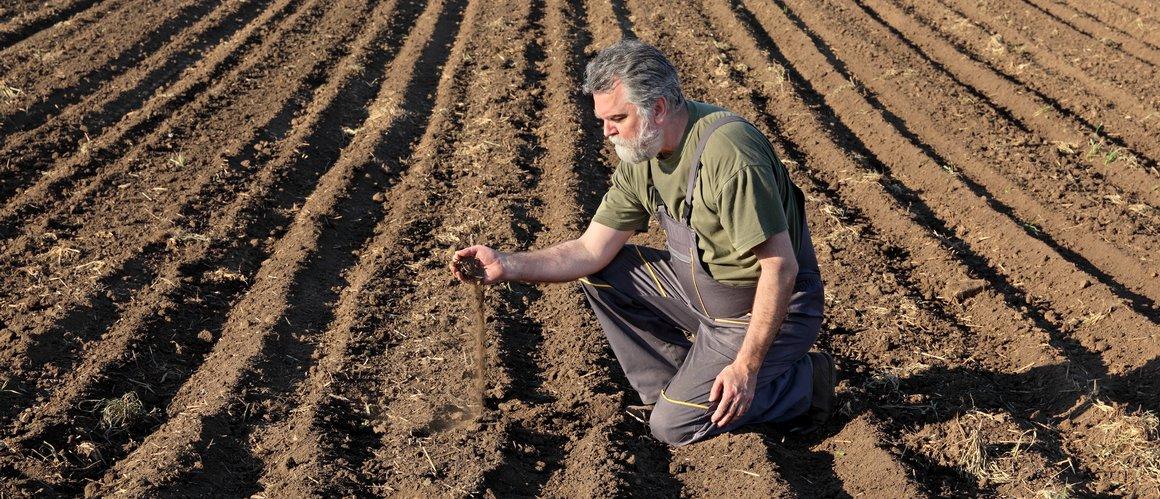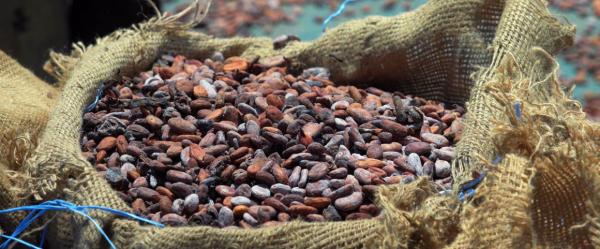Expert view 30 September 2025
- Home
- CIRAD news
- News
- Little knowledge of agricultural soil pollution
Matthieu Bravin: "When it comes to the risks of soil pollution, we are standing on a time bomb"

Agricultural soil contamination is clearly an issue for both the present and the future, as contaminants tend to accumulate in time © AdobeStock
Why do you feel that agricultural soil pollution is a real issue these days?
Matthieu Bravin: Very recent global inventories recorded more than 350 000 substances likely to be released into the environment and become contaminants. And of those substances, just 6% have been the subject of scientific studies in the past fifty years, whether regarding their toxicity or their accumulation in the air, water or soil. We humans are clearly better at developing new chemicals than we are at assessing their impact on ecosystems or health.
Whether past or current, contamination is clearly an issue for both the present and the future, since contaminants tend to build up in the soil in time. Of all the different compartments in our environment, if I can put it like this, the soil isa sort of super-receptacle for contamination that acts as a physical and chemical filter for any substance released into the environment.
Agricultural soils play a key role in producing our food, but that's not all. They also play a vital part in regulating water and climate cycles, through carbon capture. The soil is also the world's greatest biodiversity reservoir, since it is home to almost 60% of all known living species.
Although there is still room for improvement, we already know a lot about soil fertility, carbon capture and salinization. In comparison, relatively little attention has ever been paid to soil contamination, let alone to assessing pollution risks.
We have only recently become fully aware of the importance of soils and their good health. To give just one example, the European Commission put forward a directive on soil health and resilience in July 2023. If it is approved, it will be the first ever EU directive on soil protection and health. In comparison, EU framework directives on air and water were passed some twenty years ago.
There's a lot of talk about pesticides, though...
M.B.: Yes, of all agricultural contaminants, they're the ones that have been studied most. However, agricultural research organizations focus more on cutting phytosanitary product use than on studying contamination levels and their health and environmental consequences, despite the fact that we would still need to inventory and characterize soil contamination and pollution risks, even if we were to stop using phytosanitary products entirely in future. We have used such products in such a way that they will be in our soils for a long time to come. We therefore need to determine what sort of contamination levels can be considered tolerable in terms of our health and that of the environment. As things stand, the scientific community can only provide partial answers.
Why has there been so little interest in agricultural soil contamination?
M.B.: Maybe simply because this type of contamination is more difficult to study than that of "polluted sites and soils" such as industrial sites, where contamination levels are often a lot higher and the source of contamination is known. Agricultural soils, on the other hand, are generally affected by "diffuse" contamination from various sources, involving small concentrations of a large range of types of contaminants, often across very large areas. That diffuse contamination of agricultural soils is more difficult to demonstrate, and its potential environmental and health consequences are more difficult to assess.
Antimicrobial resistance is a great example of this complexity. When they spread throughout the environment, particularly in agricultural soils, traces of the antibiotics used to treat humans and animals generally mix with other chemical contaminants such as copper and zinc, and biological contaminants like pathogenic microorganisms. It has been clearly shown that this cocktail of contaminants is likely to foster the acquisition of antimicrobial resistance in those pathogenic microorganisms, which could have disastrous consequences for animal and human health.
What sort of expertise does CIRAD have in terms of agricultural soil pollution?
M.B.: Among other things, my research unit, Recycling and Risk, works to characterize the extent of agricultural soil contamination and assess the associated pollution risks. For instance, we are looking at how contaminants spread through agro-ecosystems and build up in the soils. We are also working to develop methods, based on life cycle assessments, and tools to assess pollution risks. In collaboration with INRAE, we have developed and standardized a biological test, called RHIZOtest, to assess the risks of contaminant transfer from the soil to crops.
Of all the different farming practices, we are particularly looking at the use of residual materials as fertilizers, whether materials of agricultural origin, such as livestock effluent, urban, such as sewage sludge, or industrial, such as ash from thermal power stations. While such residuals have many advantages in agronomic terms and for a circular economy, they also contain a wide range of contaminants from the chemicals we use on a daily basis: trace elements, flame retardants, antibiotics, microplastics, and so on. Their use in agriculture is one of the pillars of agroecology, but the unintentional presence of such contaminants casts doubt on the health and environmental safety of the practice. We are therefore working on a risk-benefit analysis of it.
In the end, whether we are talking about using phytosanitary products or residuals, the challenge is not just to reduce their use. What we need to do is to regulate practices more effectively, to limit the extent of contamination, and to look at whether current and future contamination is acceptable, in the light of the advantages and disadvantages of the practices considered. It is up to the scientific community, and agronomists, in particular, to help policymakers and territorial stakeholders to do this.
Soil health is one component of the One Health approach that is currently fashionable. Doesn't the approach help highlight the issues surrounding agricultural soils?
M.B.: Of course it does, but it has not gone far enough. If we look at the priorities of the One Health approaches rolled out in recent years, it's clear that the health of ecosystems, particularly agro-ecosystems, and even more specifically agricultural soils, has not been studied anything like as much as animal health, let along human health. The One Health approach is still dominated by disciplines relating to human and veterinary health. Agricultural sciences, not just soil science, have a major role to play in resetting the balance. By virtue of its culture of interdisciplinarity, CIRAD is institutionally well placed to drive change as regards One Health approaches.
To give just one example, in Réunion in 2022, at the crossroads between veterinary sciences (ASTRE research unit), genomics (PVBMT research unit) biochemistry (Recycling and Risk research unit) and agronomy (AIDA research unit), we launched an exploratory study of the dissemination throughout agro-ecosystems of genes conferring resistance to antibiotics and the chemical contaminants that foster their occurrence.
What about agricultural soil pollution in the global South?
M.B.: In relation to the situation in the global North, the available information is even more sketchy. For instance, for want of reliable information, a recent inventory of chemical substances produced and used worldwide did not include any data from South America, Africa, the Middle East or most of the countries in Southeast Asia.
Nevertheless, if we look at CIRAD's work in various parts of the world, it is absolutely clear that this is just as much, if not more of an issue in the global South.
The challenge facing these zones, particularly in terms of capacity building, is huge. Initiatives such setting up a soil health network in West Africa with IRD, INRAE and the rest of our partners in the region are therefore a step in the right direction.




























